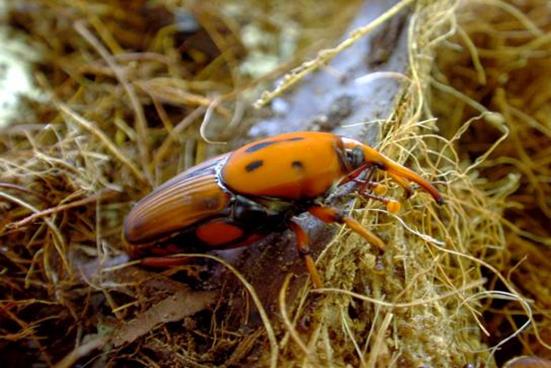Ministerial Donor Meeting to support the Red Palm Weevil Trust Fund and Regional Program for the Near East and North Africa
Hybrid Event, 09/03/2019 - 10/03/2019

Red Palm Weevil (RPW, Rhynchophorus ferrugineus)
©
Red Palm Weevil (RPW, Rhynchophorus ferrugineus) is a key transboundary pest of date, coconut and ornamental palms that originates from South Asia and is rapidly spreading throughout the world. In the Near East, RPW is causing widespread damage to date palms and impacts production, farmer livelihoods and the environment. It is also present in North Africa and the Mediterranean Basin. RPW is a quarantine pest in the Near East and North Africa (NENA) countries as well as in Latin America and it is the object of emergency measures in the European Union.
Weak quarantine procedures and difficulties in the early detection of RPW-infested plant materials have contributed to its rapid spread. RPW has not been effectively managed despite efforts and resources provided by countries and organizations. Extensive research has also been conducted on the management of Red Palm Weevil. There is broad recognition that Red Palm Weevil challenges have to be addressed urgently at national, regional and global levels and that enhanced solidarity and cooperation between countries and regions is required, in particular to harmonize monitoring and control strategies.
At the Scientific Consultation and High-Level Meeting held at FAO headquarters in March 2017, participants from member countries, UN agencies, Non-governmental Organizations (NGOs), regulatory authorities, international scientists, farmer organizations and the private sector reaffirmed their commitment to lead national, regional and global efforts to combat Red Palm Weevil. They called for joint and coordinated action, as well as for technical and financial support.
This high-level meeting aims at speeding up efforts and call memeber states and regional stakeholder for action. It will be held in the Emirates Palace in Abu Dhabi between 9-10 March 2019.
Read more about this dangerous pest here
